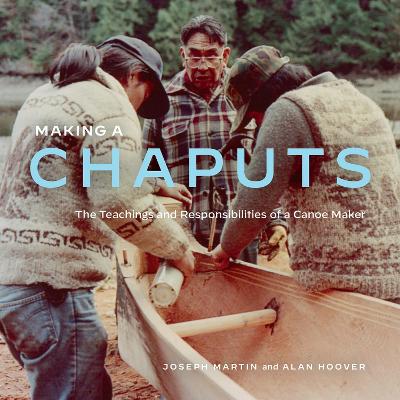Reviewed by annieb123 on
Making a Chaputs is a well and simply written ode to the rich traditions and woodcrafting culture of the Tla-o-qui-aht First Nations by Joseph Martin and Alan Hoover. Due out 17th June 2022 from the Royal BC Museum, it's 96 pages and will be available in paperback and ebook formats.
This is a well documented and detailed masterclass on the physical aspects of creating a dugout canoe, from choosing materials, through the process to finishing. The author, Tuu-tah-qwees nup-she-tl (Joseph Martin) is a lifelong woodworker and learned the traditional methods at his father's knee from childhood on. Possibly more importantly, it's a detailed documentation of the vitally important culture and craft of the artisan dugouts upon which his people literally depended for day-to-day life. Traveling, fishing, and living on the water, under often difficult weather and terrain conditions rendered the dugout canoe absolutely necessary. The process has been honed over thousands of years and the functionality and safety of the design is inextricably entwined with the art and culture.
The vibe throughout the book is conversational. It feels very much like a masterclass with a master shipwright. Additional editorial comments by the editor Alan Hoover are provided in the text in contrast colour for clarity purposes.
The book is very well illustrated throughout. Action photos are taken without hands or tools obscuring the view. The book also includes a number of historical photos from (presumably) the author's personal family collection.
Five stars. This is a well written important documentation of the culture and art of First Nation people. Some of the personal recollections include mentions of casual racism and institutionalised cruelty in the residential schools. I found them sad, but a necessary reminder of the resilience of the people who went through them to pass on traditional culture and art into a new renaissance. This would make a good selection for public and school library acquisition, as well as for students of local history and culture.
Disclosure: I received an ARC at no cost from the author/publisher for review purposes.
Reading updates
- Started reading
- Finished reading
- 8 May, 2022: Reviewed
